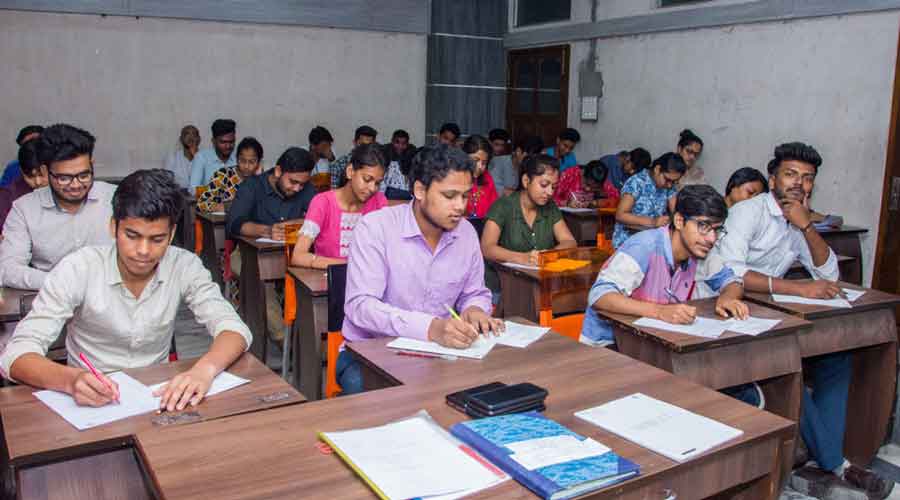
Central varsities to admit students through common entrance test
The decisions were taken by the vice-chancellors of the 41 universities at a meeting on November 22
 |
| Postgraduate students too will be admitted through the Central Universities Common Entrance Test, instead of each varsity conducting its own entrance tests.: File photo |
Basant Kumar Mohanty | TT | New Delhi | 11.12.21: The central universities will from next year admit undergraduate students through a common entrance test, abandoning the practice of granting admissions on the basis of board marks.
Postgraduate students too will be admitted through the Central Universities Common Entrance Test (CUCET), instead of each varsity conducting its own entrance tests.
These decisions were taken by the vice-chancellors of the 41 central universities at a meeting on November 22.
Currently, most of the central universities admit undergraduate students entirely on the basis of Class XII marks. There have, however, been allegations that some boards award marks too liberally, putting students from other boards at a disadvantage.
Earlier this year, a committee headed by R.P. Tiwari, VC of Punjab Central University, had recommended the CUCET for undergraduate and postgraduate admissions.
It had, however, suggested that the central universities give 50 per cent weightage to board marks — normalising them to bring parity among boards — and 50 per cent to the CUCET results during undergraduate admissions.
The VCs rejected this proposal, opting for admission solely on the basis of the CUCET, to be conducted by the National Testing Agency.
“Every board follows its own pattern of examinations and evaluation in Class XII. It was felt that normalisation may not be possible given the varying pattern followed by boards,” Tiwari told The Telegraph.
Departments of central universities — or institutions affiliated to them — that teach engineering, pharmacy, architecture or law courses will continue to admit students on the basis of their existing common entrance tests.
Manoj Sinha, principal of Aryabhat College, affiliated to Delhi University, disapproved of the refusal to give weightage to board marks.
“Forcing students to take another exam after Class XII means you are derecognising the board exam. Actual education happens in the schools and colleges. The entrance exam system will push the students towards coaching centres,” Sinha said.
He acknowledged that the school boards had themselves contributed to the devaluation of their exams by awarding marks too liberally, so that students were able to score 100 per cent marks even in papers like English and social science.
“There should be a formula to bring parity among the marks awarded by different boards. Undergraduate students should be admitted on the basis of their board scores after moderation,” Sinha said.
As for postgraduate admissions through the CUCET, the Tiwari committee had recommended that two-thirds of the questions test domain knowledge and the remaining third test aptitude.
But the VCs’ meeting decided the CUCET for master’s courses will have 75 per cent questions on domain knowledge and 25 per cent that test aptitude.

0 Response to " Central varsities to admit students through common entrance test"
Post a Comment
Disclaimer Note:
The views expressed in the articles published here are solely those of the author and do not necessarily reflect the official policy, position, or perspective of Kalimpong News or KalimNews. Kalimpong News and KalimNews disclaim all liability for the published or posted articles, news, and information and assume no responsibility for the accuracy or validity of the content.
Kalimpong News is a non-profit online news platform managed by KalimNews and operated under the Kalimpong Press Club.
Comment Policy:
We encourage respectful and constructive discussions. Please ensure decency while commenting and register with your email ID to participate.
Note: only a member of this blog may post a comment.